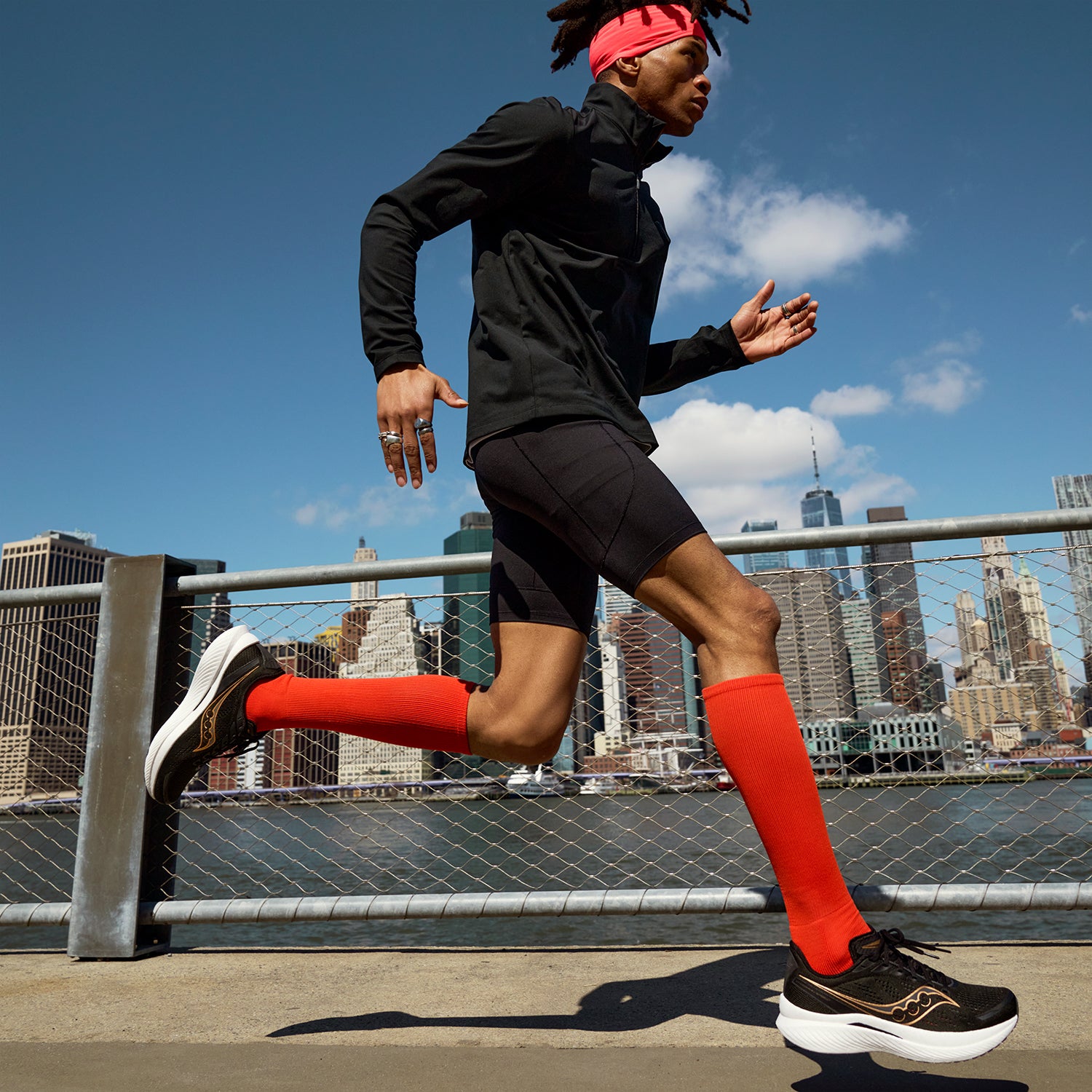In 2017, the running world got turned on its head with the arrival of Nike’s Vaporfly 4%, a shoe proven to let you run faster while using less energy. Other companies rushed to catch up, creating their own super shoes with thick soles of ultra-bouncy foam surrounding curved, carbon-fiber plates. For the past five years, these top-end (and top dollar) models tuned for racing fast marathons have sucked up all the shoe-innovation air. Recently, however, the industry’s focus and excitement has shifted to less expensive models that retain much of the super shoe’s fast, fun ride, but which are more approachable for more runners. Let’s call them semi-super shoes.
The benchmark for this new category is the , a $160 model that was released alongside their ($200) in mid-summer 2020. “We wanted to democratize the super shoe,” says Ted Fitzpatrick, Saucony’s vice president of product management. “Once we landed on the Pro, the mindset was, ‘What’s the everyday runner going to be able to wear to get a taste of this product?’”
Before the Endorphin Speed came out, Nike had already tried to build a lower-priced model of their Vaporfly 4% (called the ) using a carbon plate in a less-responsive EVA-based foam. But the shoe failed to provide the bouncy, propulsive ride that made super racers special. Saucony took a different tack, retaining the Pro’s light, ultra-responsive PEBA-based foam, but swapping the rigid carbon-fiber plate for a nylon one that had a little give to it. “We came to an understanding that having some flexibility in the forefoot, with the toes doing a little bit of the work, was probably a good thing in this shoe,” Fitzpatrick says. The formula worked, and the Speed received rave reviews from runners who found it accommodated slower paces and less-efficient strides, but retained all of the fun of its more expensive sibling.
The takeaway: while carbon-fiber plates have gotten much of the press in the super-shoe era, it’s actually the advanced foams—lighter, softer, and livelier than ever before—that produce the majority of the genre’s trademark feel. Yes, these foams rely on a firm plate to help control their bounce, roll, and squishiness; but that plate does not need to be carbon. Modern foams work nearly as well with less-expensive and more flexible inserts made from nylon, TPU, fiberglass, or other composites—and even on their own given the right density and shoe geometry.
This fact doesn’t come as a surprise to Wouter Hoogkamer, a biomechanics researcher at the University of Massachusetts. Hoogkamer says that, contrary to popular belief, these plates don’t act as springs. Their contribution to a shoe’s propulsion is, in fact, minuscule. In one , Hoogkamer and colleagues even made multiple cuts in the carbon plates of some Nike Vaporfly 4% to let them flex freely, and discovered that running economy while wearing the shoes with split plates was essentially the same as while wearing intact shoes. “It is the foam and its energy return that is dominant,” Hoogkamer says. ”The plate is not that important, but rather part of the whole bundle.”
In addition to being cheaper, more flexible plates don’t seem to put as much stress on feet as rigid ones. “Overall, I am seeing fewer foot injuries from the semi-super shoes compared to those with rigid plates,” says Abby Douek, a physical therapist and running stride analyst. “Yet they seem to still conserve some energy and make longer runs a little less impactful on the body.” Semi-super shoes weigh slightly more than their racing siblings, but make up for that with comfort and a ride better suited for up-tempo training.
Semi-Super Shoes You Can Buy
Every major brand now has its own semi-super shoe in the $150 to $190 price range. Exactly what models belong in the category can be debated, but here are some that we think fit the criteria:
- ($160)
- Altra Vanish Tempo ($190)
- Asics Magic Speed 2 ($150)
- ($150)
- ($160)
- ($160)
- ($170)
- ($160)
- Saucony Endorphin Speed 3 ($170)
- ($145)


